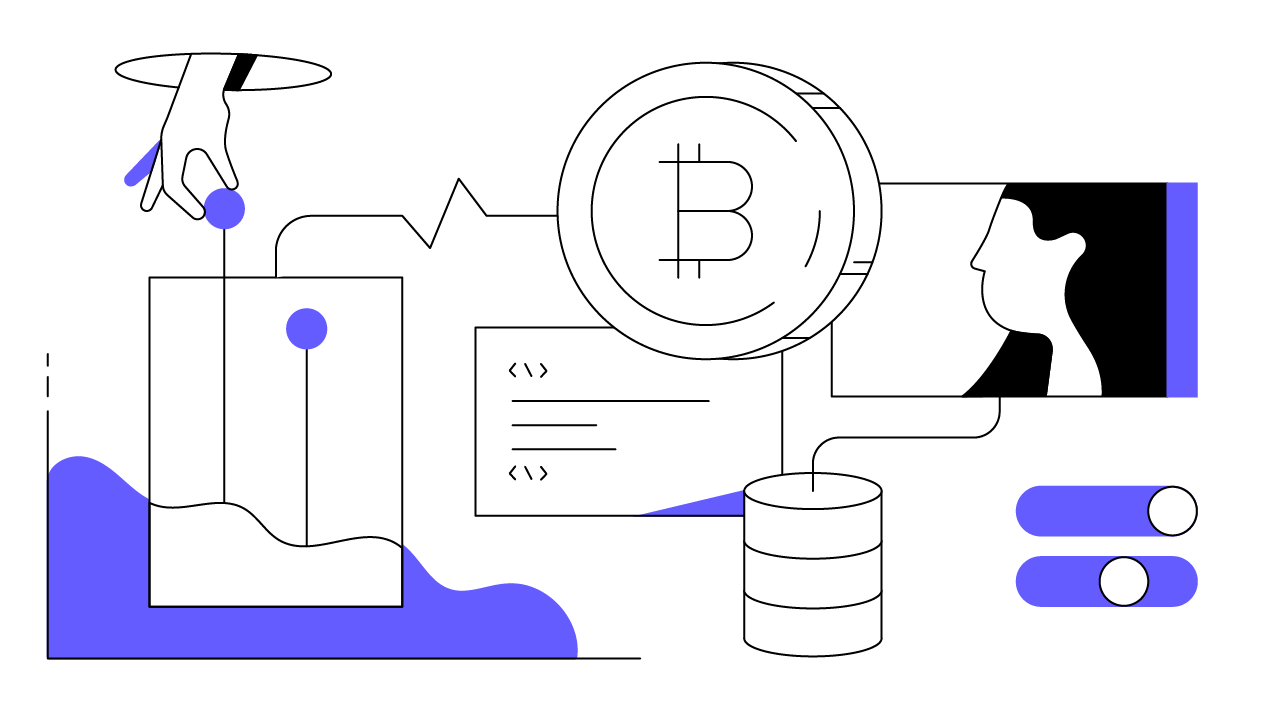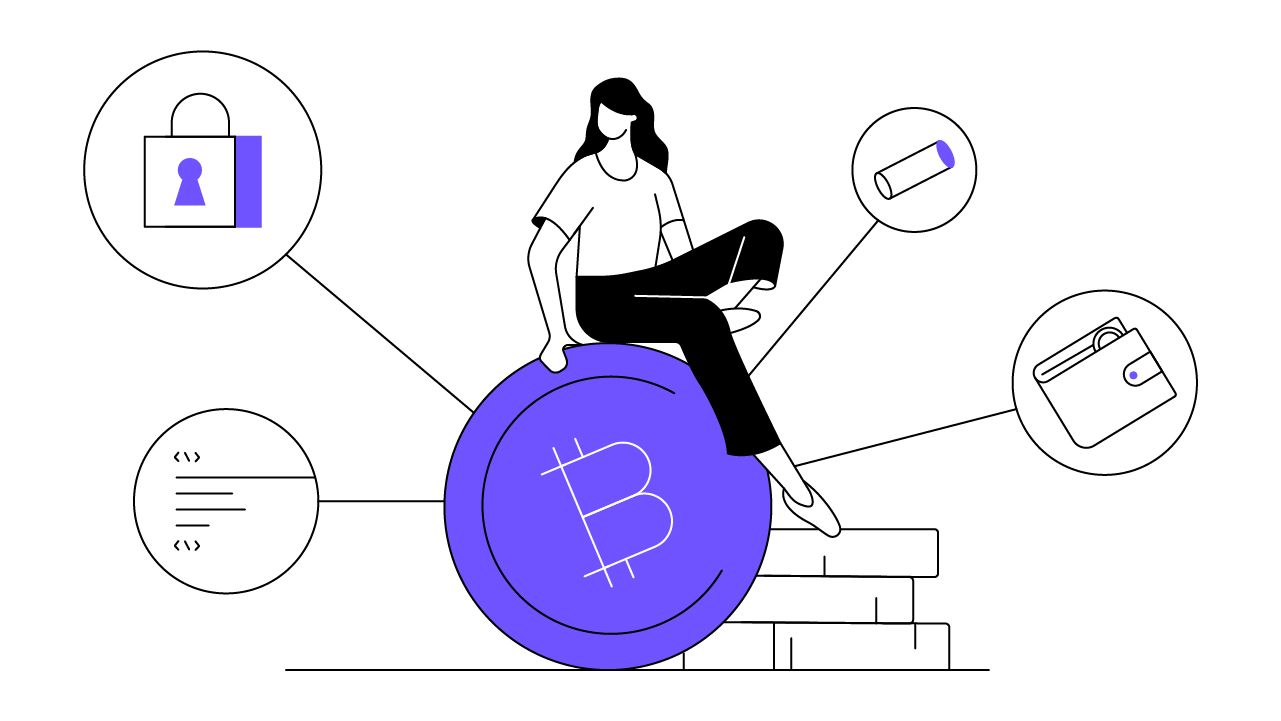Contents
Is Bitcoin Satoshi Vision (BSV) What Satoshi Envisioned?
We explore Bitcoin SV’s technical details and its role in fulfilling Satoshi’s vision for Bitcoin.
Updated October 15, 2023 • 5 min read

Summary
Since Bitcoin’s launch in 2009, the blockchain network and its underlying cryptocurrency bitcoin (BTC) have progressed remarkably. Bitcoin was designed to democratize the global monetary system and has since inspired the development of thousands of new and unique “altcoins” (cryptocurrencies other than bitcoin). Most of these alternative blockchain frameworks and tokens have sought to improve upon the perceived limitations of the Bitcoin protocol.
One notable example of an effort to improve upon Bitcoin was the Bitcoin Cash (BCH) fork that took place in 2017. Bitcoin Cash sought to increase Bitcoin’s transaction speed and overall transaction throughput in order to promote the enterprise scalability and mass adoption of blockchain and cryptocurrencies. A hard fork of Bitcoin Cash in 2018 spawned the Bitcoin SV blockchain and its underlying asset BSV. Bitcoin SV’s stated purpose is to become a more technologically advanced continuation of the original Bitcoin protocol — focused on increasing network transaction speeds and enabling drastically increased scalability. With this in mind, Bitcoin SV stands for “Bitcoin Satoshi Vision,” as the blockchain project and its cryptocurrency were intended to execute the vision of Bitcoin’s pseudonymous founder, Satoshi Nakamoto. It is no coincidence then that Craig Wright, creator of Bitcoin SV, claims to be Nakamoto himself.
History Leading Up to Bitcoin SV
In an industry where blockchain projects and their associated cryptocurrencies compete to provide the most utility to investors, institutions, and everyday users alike, only the most unique, innovative, and genuinely useful projects survive. Many existing alternative cryptocurrencies were designed to expand on the original uses intended by the initial Bitcoin blockchain, aiming to add something new and innovative to the industry. Oftentimes, these projects try to implement new use cases altogether, with new functionalities like anonymity, decentralized application development, or decentralized storage. They can even add improved programmability tailored for the development of specific types of smart contracts. Conversely, other altcoins arise from projects that (rather than adding net-new functionalities) simply desire to fix what they believe to be broken within something old. Bitcoin is often the subject of such projects, as is the case with Bitcoin SV.
During Bitcoin’s early stages of development, the network was more than capable of managing the transaction load of a small niche community, primarily composed of developers and cryptography enthusiasts. But as Bitcoin’s popularity grew, the network started to get bogged down with an increasing volume of transactions, eventually resulting in a drastic impact on processing times. Many became concerned that eventually, Bitcoin transactions might take days or weeks to clear if nothing was done to address the issue. If these multi-day delays were to actually occur, transaction fees could increase significantly. These delay and fee concerns formed the root of what became known as Bitcoin’s scalability problem.
Bitcoin Cash (BCH) was the first Bitcoin fork that tried to effectively solve Bitcoin’s scalability problem. The desire to increase the number of transactions that could take place every second was the primary impetus for creating Bitcoin Cash through a major network hard fork. This concern is reflected in the structure of BCH, which significantly increased the original BTC block size. More data in each block means that transactions can be processed more quickly. Bitcoin Cash’s developers also took measures to reduce the total amount of data needing verification in each transaction, which further sped up the process.
Transaction speed is crucial to fostering the scalability, functionality, mass-adoption, and ultimate success of a cryptocurrency. For comparison, the Bitcoin network is currently capable of processing seven transactions per second, whereas Bitcoin Cash can process around 116 transactions per second. Although Bitcoin Cash was the first Bitcoin fork, it was not the last.
Bitcoin SV Ideology
As a matter of principle, proponents of Bitcoin SV believe that the original Bitcoin protocol is highly flawed, and as a result, they do not consider it justifiable to continue relying on its structural approach. They believe that the implementation of SegWit, the Lightning Network, and other modifications represent a threat to the stability and validity of the original Bitcoin protocol. The community around Bitcoin SV makes the rather debatable claim that Satoshi’s only intended scalability-oriented change to Bitcoin’s original protocol was to increase block sizes. As a result, they also determine that any protocol changes beyond block size increases are deviations from the original Bitcoin protocol. According to the Bitcoin SV development team, the only acceptable way to increase scalability is to increase block size — and all other methods are rejections of the original Bitcoin protocol.
By this logic, Bitcoin rejected its own original protocol design when it implemented SegWit to enable a newly developed off-chain processing solution. Further, Bitcoin Cash was (at first) the true continuation of the original Bitcoin protocol (despite its new ticker symbol) because it didn’t introduce any net-new technologies, and simply expanded on existing functionalities by increasing the block size from 1MB to 32MB. However, Bitcoin Cash continued making more structural changes to their protocol, which led to a hard fork of Bitcoin Cash that created Bitcoin SV. Thus, it is the belief of its community that Bitcoin SV is the one true continuation of the original Bitcoin blockchain network, despite the fact that it too has a different ticker symbol.
Bitcoin SV Protocol Technical Structure
BSV is the native cryptocurrency of the Bitcoin SV blockchain. This cryptocurrency functions according to the early rules of BTC from the original Bitcoin whitepaper, aside from the significant increase in the block size. Bitcoin SV emerged from the hard fork of Bitcoin Cash that occurred on November 15, 2018, due to two main factors:
The belief that the scalability features Bitcoin Cash had implemented were not significant enough to meet Bitcoin’s ongoing requirements
The desire to return to the original Bitcoin design as represented in version 0.1 of the Bitcoin protocol
Originally designed with a default block size of 128MB, the Bitcoin SV protocol underwent its Quasar Protocol Upgrade in July 2019, expanding the block size to 2GB (2,000MB, in contrast to Bitcoin’s original 1MB block size). By design, the protocol allows for an adjustable block size that is determined by the network’s consensus mechanism. Miners are also able to choose which size of blocks they wish to mine. The structure of Bitcoin SV is intended to help process more transactions at once, generating more transaction fees — an increase aimed at incentivizing miners to continue mining new blocks long after block rewards have stopped.
With many blockchains (including Proof-of-Work protocols like Bitcoin and Bitcoin SV), miners earn block rewards for mining new blocks and adding them to the blockchain. Block rewards act as a financial incentivization mechanism that enables miners to allocate their resources and processing power to mining. As time goes on (for example, about every four years for BTC), block rewards are gradually reduced by increments of 50% in a process known as halving. The ability for miners to choose which size of blocks they wish to mine is a potentially attractive feature as block rewards continue to decrease due to halving. Larger blocks mean more transactions per block, so miners stand to earn more in transaction fees, thus offsetting diminishing block rewards.
Bitcoin SV reports that it conducts 300 transactions per second on average, with a peak capacity of 2,800 transactions per second on its mainnet (as of July 2020). The team also claims its Gigabit Testnet (GBTN) can process up to 5,500 transactions per second due to its unbounded block size. For example, in May of 2020, the Bitcoin SV-focused enterprise blockchain service provider TAAL processed a 369MB block on the Bitcoin SV mainnet, containing 1.3 million BSV transactions. While still very shy of Bitcoin SV’s 2GB limit, this milestone represents transaction speeds far beyond the processing capabilities of either BTC or BCH.
Bitcoin SV aims to have a fixed protocol structure in order to provide the kind of stability prospective investors and enterprise-size applications tend to seek. The Bitcoin SV protocol is designed to be highly scalable and regulation-friendly to garner mainstream confidence, and eventually global enterprise adoption. Despite these laudable goals, it remains to be seen whether the project can maintain long-term viability. For one thing, big blocks are faster, though they sacrifice decentralization because fewer full nodes are able to store the entire blockchain history due to the increased memory requirements. In other words, small blocks are slower but maintain the key advantages of decentralization and security because more nodes can join and maintain the network. Speed and decentralization essentially exist on a spectrum, so the more you have of one, the less you have of the other.
The Controversy of Bitcoin SV (Craig Wright)
Ever since Bitcoin’s inception, the identity of its creator has been a subject of speculation and debate. Satoshi Nakamoto, the pseudonymous author of Bitcoin’s whitepaper, has never been identified. Although many leading figures in the blockchain and crypto space have been suspected of being Satoshi Nakamoto at one point or another, nearly all have denied the claim.
Although the majority contends that Nakamoto’s true identity is still unknown, the creator of Bitcoin SV, Craig Wright has publicly claimed to be Satoshi Nakamoto himself. However, he has failed to provide any concrete evidence, and many don’t believe his claims. Wright has been involved in many disputes tied to these claims and other Bitcoin-related controversies.
Cryptopedia does not guarantee the reliability of the Site content and shall not be held liable for any errors, omissions, or inaccuracies. The opinions and views expressed in any Cryptopedia article are solely those of the author(s) and do not reflect the opinions of Gemini or its management. The information provided on the Site is for informational purposes only, and it does not constitute an endorsement of any of the products and services discussed or investment, financial, or trading advice. A qualified professional should be consulted prior to making financial decisions. Please visit our Cryptopedia Site Policy to learn more.

Is this article helpful?


